Q
ativa perodua berapa cc
Swapping out the aircon filter in your Perodua Myvi is actually a straightforward DIY job. First things first, you'll need a new aircon filter – make sure it's the right fit for the Myvi, which you can usually pick up at auto parts stores or directly from Perodua dealerships.
Start by opening the glove box on the passenger side. Clear out any stuff inside, then look for the clips on either side of the glove box. Gently press them in and pull the glove box outwards to remove it. Once that's done, you'll see the aircon filter cover. Pop that open, take out the old filter, and pay attention to which way it was facing so you can put the new one in correctly.
After sliding the new filter into place, just reverse the steps to put the glove box back in, and you're all set. It's a good idea to replace the aircon filter every 10,000 kilometers or once a year, whichever comes first. This keeps the air inside the cabin fresh and the aircon system running efficiently. Especially with Malaysia's hot and humid weather, the filter can quickly get clogged with dust and mold. Changing it regularly not only helps the AC cool better but also cuts down on bad odors and allergens.
If you're not totally confident about doing it yourself, check the official Perodua manual or swing by an authorized service center for help. While you're at it, it's worth checking other parts of the AC system, like the condenser and air ducts, to make sure they're clean too – that way, you'll keep everything performing at its best.
Special Disclaimer: This content is published by users and does not represent the views or position of PCauto.
Related Q&A
Q
How long can an Ativa battery last?
The battery life of the Perodua Ativa typically ranges from 2 to 3 years, depending on usage habits and environmental factors. Malaysia's hot and humid climate can accelerate battery aging, so it's advisable to regularly check the battery status to ensure optimal performance. Key factors affecting battery lifespan include frequent short trips (which prevent full charging), usage of electronic devices, and prolonged parking. Drivers can extend battery life by avoiding excessive use of electronics when the car is parked and taking regular long drives to help fully charge the battery. It's worth noting that most modern car batteries are maintenance-free, but you should still pay attention to the battery warning light or have it professionally tested. Difficulty starting the vehicle or dimmed lights may indicate the need for a replacement. For hybrid models, the high-voltage battery system is designed to last longer, but the 12V auxiliary battery still requires similar maintenance. It's recommended to follow the original maintenance schedule and have the battery inspected and replaced at authorized service centers to ensure the stable operation of the vehicle's electrical system and to benefit from the quality assurance of genuine parts.
Q
How much is Ativa 2021 in Malaysia?
The 2021 Perodua Ativa's price in Malaysia varies by trim level. The entry-level Ativa 1.0L X starts at around RM62,500, while the higher-spec Ativa 1.0L AV goes for approximately RM72,400. Actual prices might fluctuate slightly depending on regional discounts or promotional offers. As Perodua's first SUV with a 1.0-liter turbocharged engine, the Ativa has drawn in many buyers with its fuel efficiency and sleek looks. It also comes packed with advanced safety features like the ASA 3.0 (Advanced Safety Assist) system, which includes pre-collision warning and lane keep assist. With decent ground clearance and good cargo space, this car is perfect for city driving and family use. If you're thinking about getting an Ativa, head down to your nearest Perodua dealership for a test drive to get a real feel for how it handles and check out the specs. While you're there, ask about their latest promotions—you might score some extra perks or free accessories.
Q
How many cc is Ativa?
The Perodua Ativa is a highly popular compact SUV in the Malaysian market. It is powered by a 1.0-liter three-cylinder turbocharged engine with an actual displacement of 998cc, falling into the category of small-displacement turbocharged engines. This design ensures power output while also taking fuel economy into account, making it very suitable for city driving. The Ativa has a maximum power of 98 horsepower and a peak torque of 140 Nm. Paired with a D-CVT transmission, it offers smooth power delivery and a responsive performance, which is ideal for daily commuting and family use.
It's worth mentioning that small-displacement turbocharged engines have become increasingly popular in the Malaysian market in recent years. They can provide decent power performance while reducing fuel consumption and emissions, meeting the dual demands of modern consumers for environmental protection and economy. The Ativa is also equipped with an advanced Safety Assist system, including functions such as pre-collision warning and lane-keeping assist, which further enhances driving safety.
For Malaysian consumers with a limited budget who want to enjoy the practicality and technological features of an SUV, the Ativa is a worthy option. Its cost-effectiveness and low maintenance costs are also what make it attractive.
Q
How many cylinders are in Perodua Ativa?
The Perodua Ativa is equipped with a 1.0-liter three-cylinder turbocharged engine, so it has a total of three cylinders. This engine adopts the advanced Dual VVT-i technology, which can provide good power output while taking fuel economy into account. It's very suitable for the frequent start-stop traffic conditions in Malaysian cities. The design of the three-cylinder engine is becoming more and more common in small SUVs because it can achieve high efficiency in a compact size and reduce the overall vehicle weight at the same time, which is very practical for daily commuting. The maximum power of Ativa's engine is 98 horsepower, and the peak torque is 140 N·m. It is mated with a D-CVT gearbox, and its overall performance is smooth and reliable. As a popular SUV model under Perodua, Ativa is loved by many Malaysian consumers, especially young families and urban commuters, thanks to its small and flexible body and economical fuel consumption. Although the three-cylinder engine requires higher technical requirements in noise and vibration control, the modern automotive industry has significantly improved these problems through technologies such as balance shafts to ensure driving comfort.
Q
What is the starting price of Ativa?
As one of the most popular entry - level SUVs in the Malaysian market, the starting price of the Perodua Ativa is around RM62,500 (excluding insurance). This is the base price for the 1.0L Turbo AV version. For the higher - spec 1.0L Turbo H version, the price starts from around RM72,000. The actual price may vary slightly due to dealer promotions or optional packages.
The Ativa is powered by a 1.0 - liter three - cylinder turbocharged engine, paired with a D - CVT transmission. It focuses on fuel economy, with an official fuel consumption data of 18.9 km/L. It also comes with the ASA 3.0 advanced safety assist system, including functions like pre - collision warning and lane - keeping assist. Its cost - effectiveness is quite competitive among B - segment SUVs.
It's worth noting that the Ativa is a sister model of the Japanese Daihatsu Rocky and Toyota Raize, sharing the DNGA modular platform. However, it has adjusted the suspension settings according to Malaysian road conditions and uses local parts to control costs.
When buying a car, it is recommended that consumers compare the road tax rates in different states and pay attention to the after - sales promotion packages regularly launched by Perodua, such as free maintenance times or low - interest loans. These can further reduce the cost of car ownership.
Q
Does Ativa have auto brake?
The Perodua Ativa is indeed equipped with an Autonomous Emergency Braking (AEB) system, which is part of its advanced safety assistance features. This system uses a front - mounted camera and radar to detect vehicles or pedestrians ahead. When a potential collision is detected, it automatically triggers the brakes to reduce the risk of accidents, making it particularly suitable for the complex urban traffic environment in Malaysia.
In addition to AEB, the Ativa also comes with active safety features such as Lane Keeping Assist and Adaptive Cruise Control. Overall, it has achieved a leading level of protection in its class.
It's worth noting that the Autonomous Emergency Braking system may have different technical names among different brands. For example, Toyota calls it the Pre - Collision System (PCS), while Honda refers to it as the Collision Mitigation Braking System (CMBS). However, their core functions are similar.
As a car owner, it is recommended to regularly check the cleanliness of the radar and camera to ensure the system's sensitivity. At the same time, it's important to understand that such systems are only auxiliary functions, and maintaining concentration while driving remains the primary guarantee for safety.
According to data from the Malaysian Road Safety Research Institute, vehicles equipped with AEB can reduce rear - end collisions by approximately 40%. This kind of technology is gradually becoming the mainstream configuration for new local cars.
Q
Can Ativa use CarPlay?
The Ativa is compatible with CarPlay. Some users have reported that the 2021 Perodua Ativa in Malaysia can use CarPlay. However, the data cable provided as a bonus doesn't work, causing constant disconnection. You need to use the Type-C 3.0 fast-charging data cable that comes with the original phone to avoid disconnection. Also, the overseas car infotainment system must have Easy Connect to use CarPlay.
CarPlay is an in-vehicle system launched by Apple Inc. in the United States. It seamlessly integrates users' iOS devices and iOS experience with the dashboard system. Once successfully connected, you can use the voice assistant Siri on your phone to control the in-car multimedia system. You can also operate through the touch screen on the car's dashboard or the physical buttons on the steering wheel. This makes driving operations more convenient, reduces the time drivers spend on operations while driving, and improves safety.
Q
Is Ativa 4 wheel drive?
The Perodua Ativa is a popular small SUV in the Malaysian market. However, it's not a four-wheel drive (4WD) vehicle. Instead, it uses a front-wheel drive (FWD) system. This design emphasizes fuel economy for city driving and daily practicality. The Ativa is equipped with a 1.0-liter turbocharged engine paired with a D-CVT transmission. Its power performance is suitable for city commuting. Meanwhile, its compact body size and high ground clearance also improve its passability on common road conditions in Malaysia.
For users who need four-wheel drive, they can consider other models such as the Proton X70 (some versions offer AWD) or the Toyota Rush (with an optional 4WD version). These models are more suitable for off-road or slippery roads. Four-wheel drive systems are generally divided into all-wheel drive (AWD) and part-time four-wheel drive (4WD). The former is suitable for all-weather road conditions, while the latter focuses more on off-road performance. When making a choice, you need to weigh fuel consumption, cost, and driving scenarios according to your actual needs.
In Malaysia's rainy climate, four-wheel drive models can provide better grip. However, front-wheel drive vehicles with an electronic stability system (like the ASA 3.0 standard on the Ativa) can also meet most daily needs.
Q
Is Ativa a safe car?
As a popular small SUV in the Malaysian market, the Perodua Ativa's safety performance meets the mainstream level of models in its price range. It comes standard with basic features such as dual airbags, ABS + EBD, Electronic Stability Control (ESC), and Hill Start Assist. The high - end version also adds side airbags and advanced active safety systems like Autonomous Emergency Braking (AEB) and Lane Departure Warning. Overall, its safety equipment is better than entry - level models in the same class but not as good as more premium products.
According to the ASEAN NCAP test, the Ativa received a five - star rating, with an 83% score in the adult occupant protection category. This shows that its body structure can effectively protect passengers in a collision. However, it should be noted that these tests are conducted under standard conditions, and the results in real - world road accidents may vary depending on the collision angle and speed.
For Malaysian consumers, the safety performance of the Ativa meets the needs of daily urban commuting. However, if you frequently drive long - distance on highways, it is recommended to choose a version with a more comprehensive active safety system.
It's important to note that the safety performance of any vehicle highly depends on proper use, including wearing seat belts, obeying speed limits, and regular maintenance. Good driving habits, along with maintaining an appropriate following distance and having a defensive driving mindset, can often prevent accidents more effectively than vehicle configurations.
Q
Does Ativa save fuel?
As a B-Segment SUV equipped with a 1.0-liter turbocharged engine, the Perodua Ativa really performs well in terms of fuel economy. Official data shows that its fuel consumption is about 18.9 km/l. This figure is quite fuel-efficient among vehicles in the same class, making it especially suitable for the stop-and-go traffic conditions in Malaysian cities. This is mainly due to its D-CVT transmission and engine auto start-stop technology, which can effectively reduce unnecessary fuel consumption.
If you want to further improve fuel efficiency, it is recommended to keep up with regular maintenance, use the recommended viscosity of engine oil, and avoid bad driving habits such as rapid acceleration and hard braking. Actually, apart from the vehicle's own design, driving style and road conditions also play a significant role in fuel consumption. Small SUVs like the Ativa are more flexible and fuel-efficient for urban commuting than large SUVs. However, if you often drive long distances on highways, the fuel consumption advantage may not be as obvious.
In addition, the proper use of air conditioning in Malaysia's hot weather can also affect fuel consumption. It is recommended to set the temperature between 23 - 25 degrees Celsius to achieve energy-saving results.
Popular Cars
Model Year
Car Compare
Car Photo
Latest Q&A
Q
How much does it cost to buy a 2024 Tesla Model 3?
The 2024 Tesla Model 3 starts at around RM 175,000, but the final price depends on your chosen configuration and add-ons. Opt for the Long Range or Performance version, and you’re looking at a higher tag.
As Tesla’s entry-level model, it packs cutting-edge EV tech, including 500+ km of range on a single charge and standard Autopilot for both daily commutes and road trips. Just keep in mind extra costs like insurance, registration, and potential home charger installation.
Tesla’s Supercharger network is expanding locally, with solid coverage in major cities, making charging hassle-free. Maintenance costs? Typically lower than gas cars—no oil changes, fewer moving parts—so long-term savings add up.
If you’re after more thrills, the Performance variant hits 0-100 km/h in roughly 3 seconds. Plus, government EV tax perks help soften the upfront cost.
Q
How reliable is the 2024 Model 3?
The 2024 Model 3 delivers solid reliability, thanks to Tesla’s continuous software updates and hardware refinements. Key areas like the battery management system and Autopilot have seen multiple optimizations, leading to a noticeable drop in failure rates.
This model features a stiffer body structure and an improved suspension setup, offering a smoother ride. Upgraded interior materials also help reduce cabin rattles—a common gripe with earlier builds.
EV maintenance costs remain low (no oil changes, etc.), though it’s wise to periodically check battery health and charging components for long-term performance. For shoppers eyeing EVs, charging infrastructure and home charging options matter—thankfully, public chargers are expanding fast, making daily use more convenient.
If you frequently road-trip, planning charging stops ahead helps. While the range easily handles daily drives, a little route prep goes a long way in maximizing the experience.
Q
What is the battery range of the Tesla Model 3 2025?
The battery range of Tesla Model 3 2025 is expected to be optimized based on existing models, and specific data needs to be released officially. However, referring to the EPA range of the 2024 rear wheel drive version, which is about 438 kilometers, and the high-performance version, which is about 513 kilometers, the 2025 model may further improve, especially in terms of battery technology or energy efficiency management. For electric vehicles, the range is greatly affected by driving habits, road conditions, and climate. Air conditioning may slightly reduce the range in hot weather, but the battery thermal management system can usually maintain stable performance. In terms of charging, Model 3 supports super fast charging, which can replenish about 250 kilometers of range in about 15 minutes, while home charging stations require 6-8 hours to fully charge. Daily commuting or long-distance travel are practical enough, it is recommended to follow Tesla's official website or local showroom for the latest information.
Q
Is the 2024 Model 3 worth the price?
The 2024 Model 3 strikes an impressive balance between price and performance. Its upgraded range, more refined interior, and enhanced autonomous driving features genuinely boost its competitiveness—especially for tech-savvy, eco-conscious buyers.
Tesla optimized the battery efficiency this time around, making it suitable for both daily commutes and longer trips, while the handling stays true to the brand’s signature responsiveness. If your budget allows and you’re open to EVs, this one’s worth considering—though a test drive is wise to see if it matches your driving style.
That said, local charging access matters. While public chargers are becoming more common, home installation costs should factor into your budget. Alternatives in this price range exist, so cross-shop specs and service policies (like warranty coverage or charging network support) to make a well-rounded decision.
Q
How many miles does a 2024 Tesla Model 3 get?
The 2024 Tesla Model 3 offers varying range figures depending on configuration. The rear-wheel-drive (RWD) version delivers an EPA-estimated 272 miles (approx. 438 km), while the all-wheel-drive Long Range model pushes that to around 341 miles (roughly 549 km). Real-world range may vary slightly based on driving style, road conditions, and climate.
As a pure EV, the Model 3 achieves this efficiency thanks to its advanced battery management system and lightweight design. It also supports fast charging—at a Tesla Supercharger, you can add up to 200 km of range in about 15 minutes. Whether for daily commutes or longer trips, that’s more than enough for most drivers, especially with charging infrastructure becoming more widespread.
If you need to maximize range, tweaking your driving mode or using the car’s built-in energy optimization features can help squeeze out even more miles.
View MoreRelated News
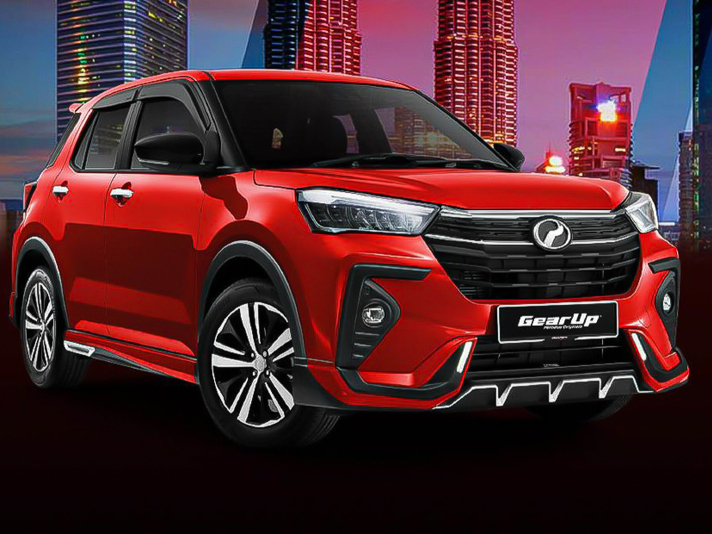
Perodua Ativa review: A B-Segment SUV with outstanding value for money
AshleyJul 21, 2025
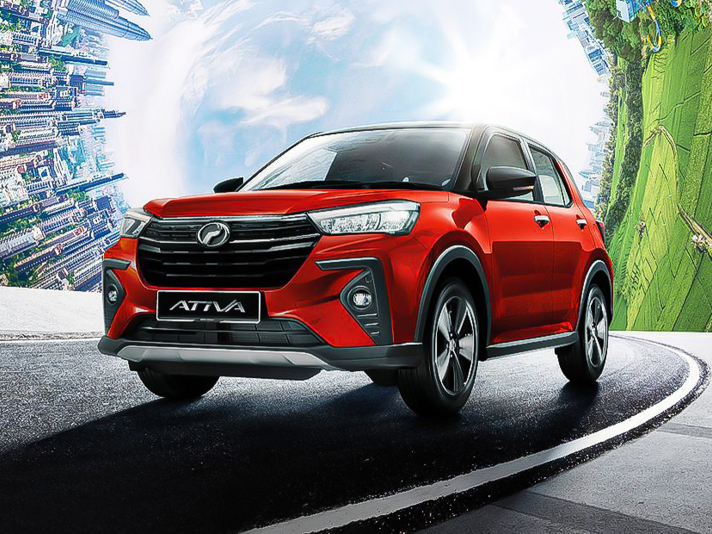
Perodua Ativa interior design revealed: One of Malaysia's most popular urban SUVs
JamesJul 14, 2025

Perodua Ativa: Why Malaysia's Top Compact SUV?
MichaelJun 12, 2025

The Comprehensive Introduction of the Perodua Ativa: A Must-Read Before Buying
RobertMar 25, 2025
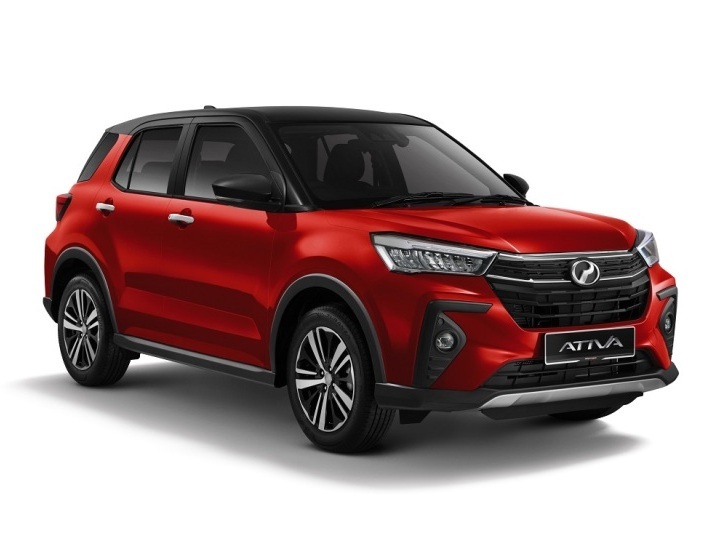
Perodua Ativa: A Comprehensive Analysis of the Advantages and Disadvantages of this Car
Kevin WongMar 13, 2025
View More


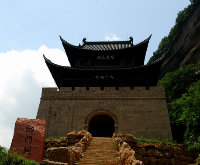
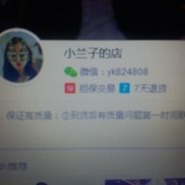














Pros
Cons